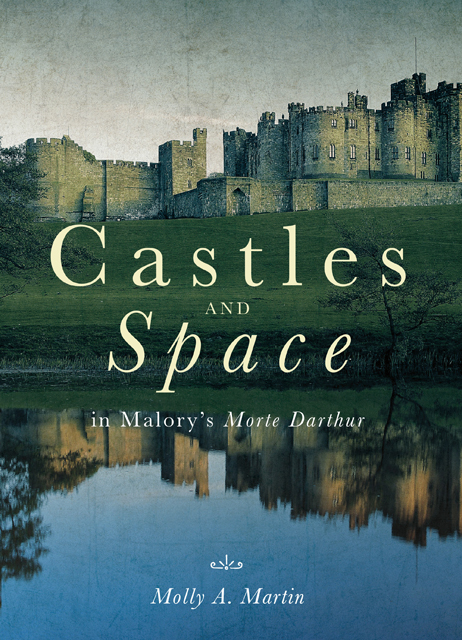Book contents
- Frontmatter
- Dedication
- Contents
- List of Plates
- Introduction: Into the Castle
- 1 Castles as Political Centers
- 2 Castles and Community Identity
- 3 Castles and Ritual
- 4 Castles and the Domestic Sphere
- 5 Castles as Prisons
- 6 Castles at War
- Afterword: Beyond the Castle Gate
- Bibliography
- Acknowledgements
- Index
- Arthurian Studies
2 - Castles and Community Identity
Published online by Cambridge University Press: 20 January 2023
- Frontmatter
- Dedication
- Contents
- List of Plates
- Introduction: Into the Castle
- 1 Castles as Political Centers
- 2 Castles and Community Identity
- 3 Castles and Ritual
- 4 Castles and the Domestic Sphere
- 5 Castles as Prisons
- 6 Castles at War
- Afterword: Beyond the Castle Gate
- Bibliography
- Acknowledgements
- Index
- Arthurian Studies
Summary
Arthur’s political success is largely predicated on the workings of his Round Table community in and out of his castle spaces. That community defines itself via architectural and social space in a pronounced way. Inclusion and exclusion manifest through closeness and distance both within and in relation to Arthur’s central castles. Throughout Malory’s Morte, we see considerable inward movement, with space collecting knights to join the fellowship of the Round Table, and knights striving to enclose themselves within the court’s embrace – Gareth and Balyn come to mind as two who do this in decidedly different ways and with quite opposite results for their identities, for their communities, and for space. There are also knights whose presence at court is desired and welcomed by king and court, and reassuring to the social identity of the Round Table. Launcelot’s premier position coupled with his frequent absence exemplifies the fraught relationship between the court as a place (the castle) and the court as a collection of knights whose actions define both space and group. And, of course, there are others who traverse Arthur’s castle spaces less frequently; this, too, can tell us much about how the community functions and exists in space. This chapter aims to peer into castle spaces especially in times of gathering, to examine moments of inclusion and exclusion, to see who gets close – and who does not – and what that means for Arthur’s Round Table community and its spaces. Indeed, I believe that we cannot fully understand Malory’s Arthurian community without considering it in place.
Social space, the product of the relationship between a space and its inhabitants, makes the castle not only the literal space of the court, but also the embodiment of the court’s ideals and a crucial factor in the construction of the court’s communal identity. Bill Hillier sees space linking the abstract idea of a group and the concrete building in which it is housed:
Buildings seem to be physical things, and societies and organisations seem to be abstractions. Yet our ideas of buildings seem to contain social abstractions, and our idea of social organisations seems to contain ideas of buildings.
- Type
- Chapter
- Information
- Castles and Space in Malory's Morte Darthur , pp. 59 - 114Publisher: Boydell & BrewerPrint publication year: 2019



